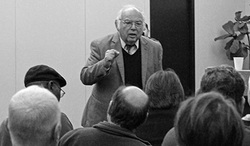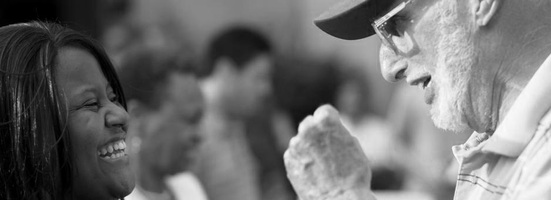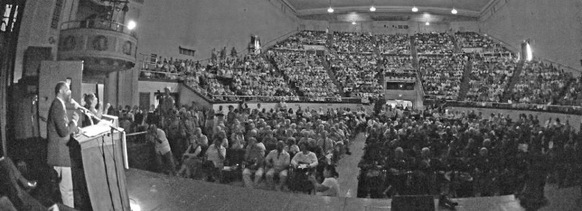Modern IAF
While the Industrial Areas Foundation dates back through the late 1930's, the modern IAF launched in the late 1960's/early 1970's with two key developments. One, spearheaded by Ed Chambers and Dick Harmon, established the curriculum and protocols for IAF's Ten Day Training. The other, pioneered by Ernesto Cortes, Jr., re-imagined broad based organizing as a powerful, enduring, institutionally grounded organization of organizations.
IAF Ten Day Training
Many of the universals that were ultimately included in IAF Ten Day Training were first identified by Saul Alinsky. It was Chambers and Harmon, however, who over a two year period sifted through their shared experience to further identify, refine and experiment with these universals. While Alinsky was spending most of his time speaking on college campuses, Harmon and Chambers were hard at work building an institution of organizational learning that attracted individuals seeking a career in the emergent field increasingly professionalized by IAF.
Cortés Organizes C.O.P.S.
Ernie Cortés moved to the Chicago area in 1971 to learn to organize from Chambers and Harmon, but he quickly translated that experience into a new, more powerful creation. In 1973 Cortes conducted well over 1,000 individual meetings in San Antonio, Texas and from that ground was able to build an organization of unprecedented scale and power - Communities Organized for Public Service - COPS.

COPS became the flagship of IAF making massive improvements to the City of San Antonio, particularly in neighborhoods that had been ignored for generations by powerful local elites. As the victories of ordinary families flowed from the Cortés engineered organization, institutional leaders around Texas and the nation began to take notice. IAF grew in Texas, California, Maryland, and New York. Later in Illinois, Arizona, New Mexico, Ohio, Wisconsin, Louisiana, Mississippi, Tennessee, North Carolina, and Nevada. Internationally, IAF took root in the United Kingdom, Australia and Canada.



